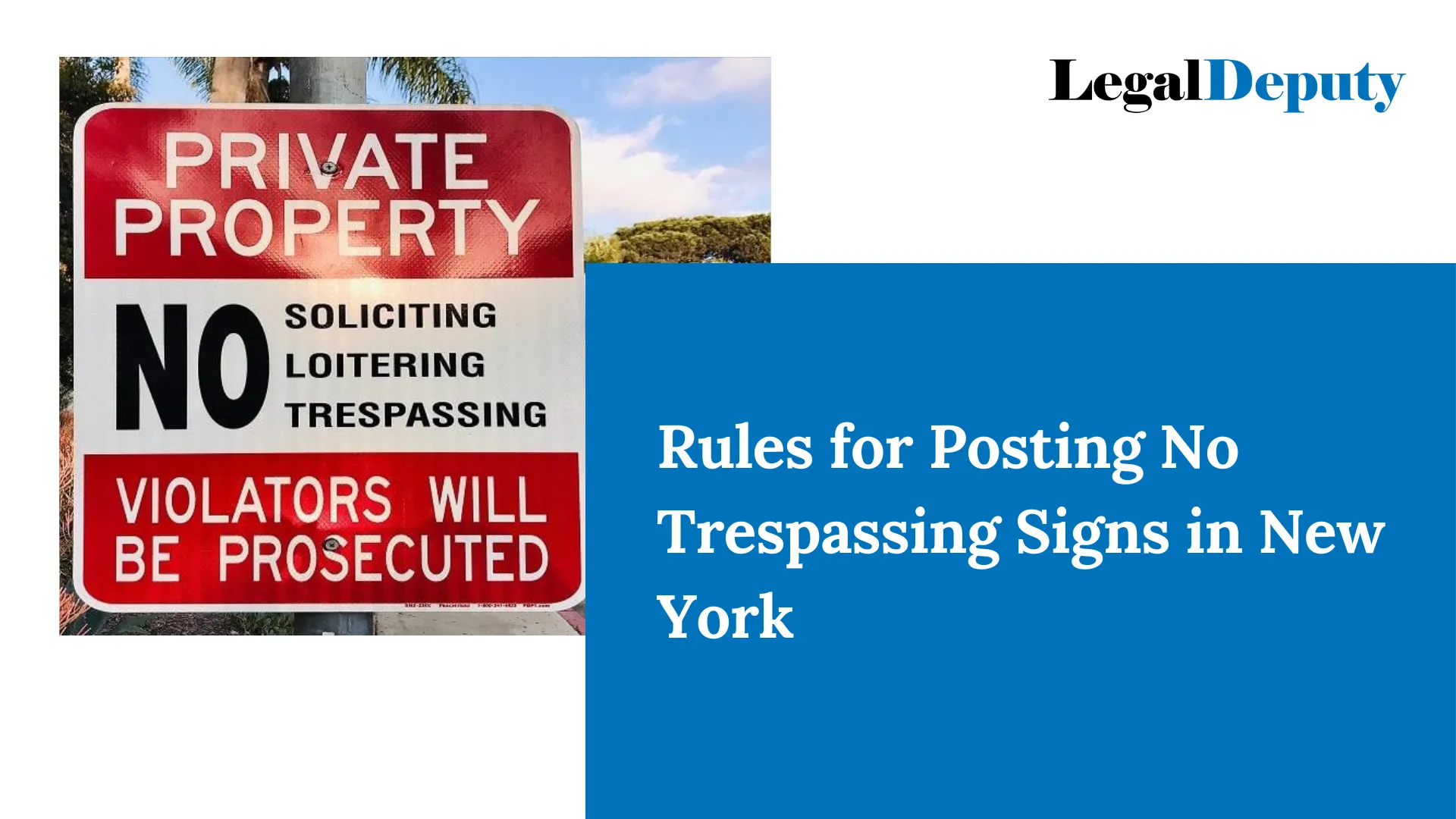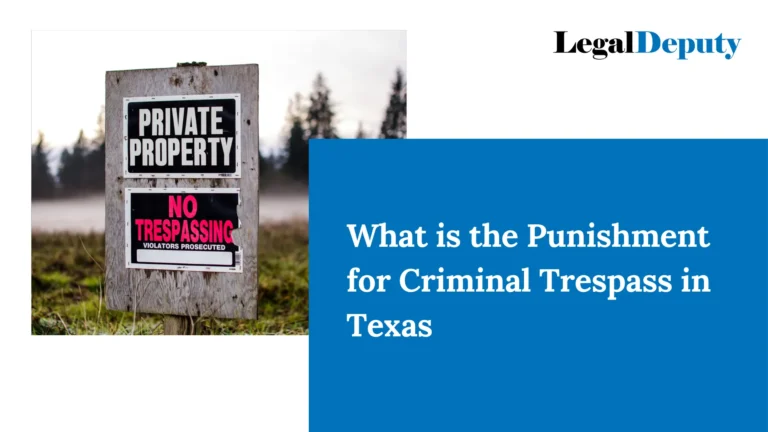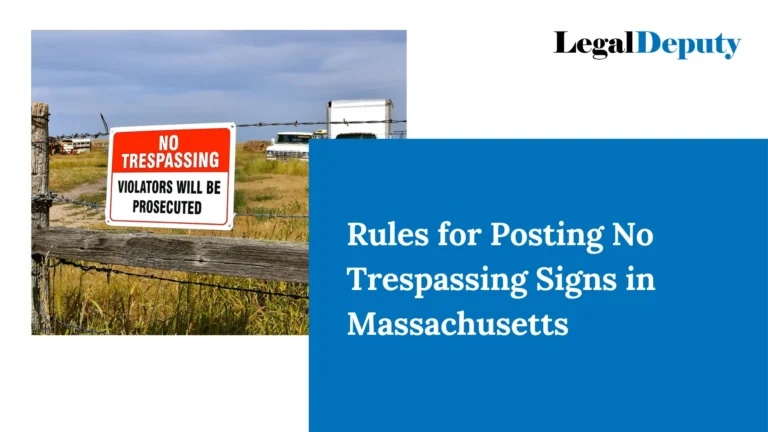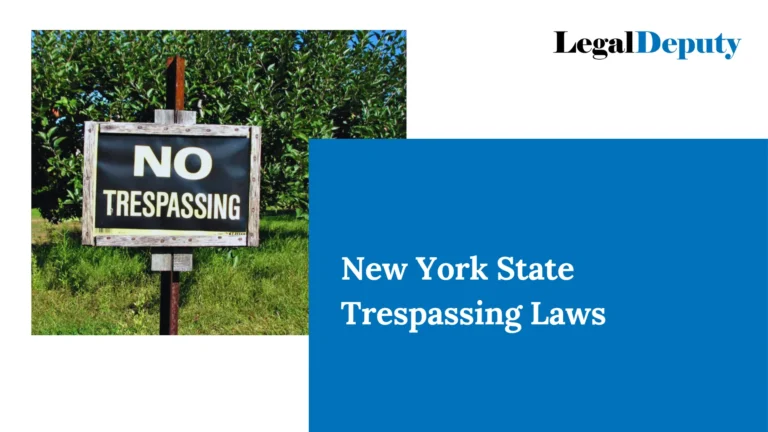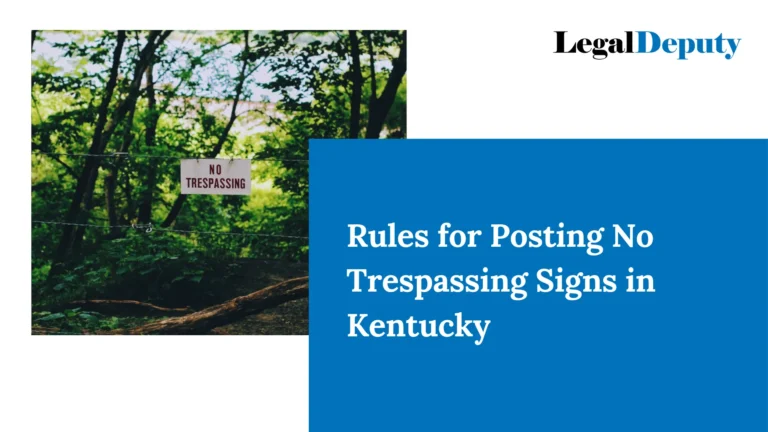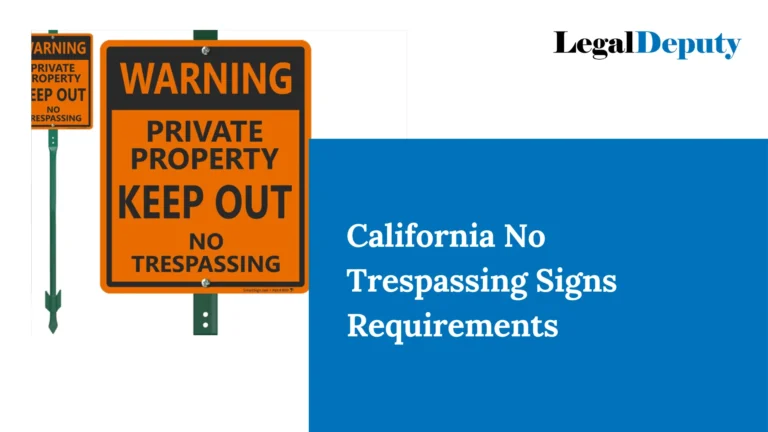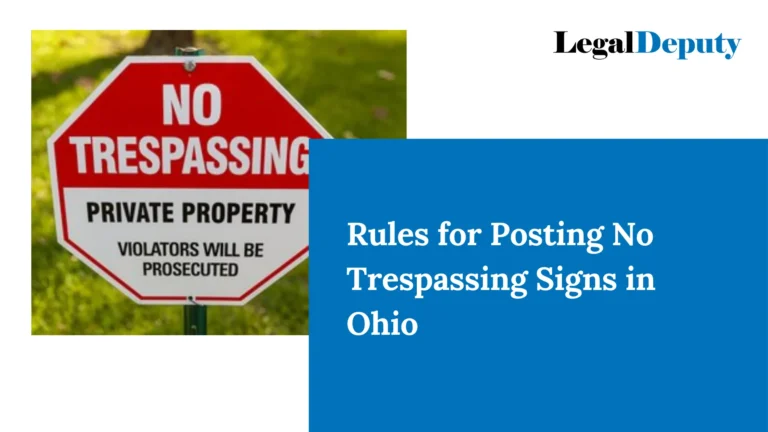Rules for Posting No Trespassing Signs in New York
Whether you’re a homeowner securing your haven or a business owner protecting your premises, understanding the ins and outs of posting “No Trespassing” signs in New York is crucial. Beyond just being markers on your property, these signs serve as legal safeguards, signaling the boundaries of your space and deterring unwanted intrusions.
In the labyrinth of New York’s legal landscape, comprehending the rules for posting no trespassing signs is akin to fortifying the castle walls. This blog post serves as your guide, offering not only the legal foundations but also practical insights into placement, design, and upkeep.
So, let’s embark on this journey to empower you with the knowledge needed to assert your property rights effectively. Your space is more than just land; it’s a sanctuary, and it’s time to protect it with informed precision.
Legal Basis in New York: Navigating the Foundations
In the intricate tapestry of property rights, New York provides a sturdy framework for asserting ownership through the strategic use of “No Trespassing” signs. To embark on this journey of safeguarding your sanctuary, understanding the legal foundations is paramount.
In the Empire State, the right to post no trespassing signs is deeply rooted in statutes designed to empower property owners. The New York State Penal Law, Section 140.05, underscores the significance of communicating boundaries through signage. By comprehending these legal underpinnings, you wield a powerful tool to protect your property and define its limits.
Moreover, New York’s legal stance emphasizes the importance of clear communication. Humanizing this legal landscape, the state recognizes that property is not merely a piece of land; it’s a haven, a space that holds personal stories and cherished memories. Posting no trespassing signs becomes an act of asserting these stories, a declaration of the sanctity of your space.
As you delve into this legal terrain, remember that understanding the legal basis is not just about compliance; it’s about embracing your role as a guardian of your domain. Your property is a canvas where life unfolds, and these signs are brushstrokes defining its boundaries. So, let’s navigate the legal nuances together, empowering you to protect what matters most.
Placement Guidelines: Strategically Defining Your Territory
Now that we’ve explored the legal foundations, let’s delve into the practical realm of placing “No Trespassing” signs on your property in New York. Consider this phase as crafting the boundaries of your sanctuary — a strategic endeavor to fortify your space against unwanted intrusions.
1. Choosing the Right Locations:
When it comes to placement, precision is key. Identify entry points and boundaries where visibility is optimal. Your signs should be strategically positioned to catch the eye, sending a clear message to anyone approaching your domain.
2. Height and Visibility Matters:
Elevate your message by placing signs at eye level, ensuring they’re easily noticeable. Whether nestled along a fence line or affixed to a prominent structure, visibility enhances the effectiveness of your communication.
3. Proximity to Property Boundaries:
To leave no room for ambiguity, position signs near property boundaries. This not only reinforces the clarity of your territory but also aligns with legal guidelines, making it unequivocal that entry beyond these points is unwelcome.
4. Illumination for Night Visibility:
Consider the visibility of your signs during nighttime. Illuminating them with strategic lighting adds an extra layer of security, ensuring that your property boundaries are communicated clearly around the clock.
As we navigate the landscape of placement guidelines, remember that each sign is more than just a marker; it’s a sentinel standing guard over your cherished space. Humanize this process by envisioning these signs as silent protectors, working in tandem with the law to secure the haven where your stories unfold. Now, armed with strategic insights, let’s move forward to create a fortress that speaks volumes about your commitment to safeguarding what matters most.
Sign Content and Design: Crafting Your Guardian Beacons
As you embark on fortifying your property with “No Trespassing” signs, the significance of content and design cannot be overstated. These signs are not just markers; they’re communication beacons that articulate the boundaries of your haven. Let’s explore how to craft these guardian beacons with precision and purpose.
1. Essential Information:
When it comes to content, clarity is paramount. Ensure your signs include essential information, such as the phrase “No Trespassing,” along with any additional legal language required in New York. Clearly communicating the consequences of unauthorized entry serves as a deterrent, underlining the seriousness of your commitment to secure your space.
2. Font Size and Readability:
Opt for a font size that balances visibility and aesthetics. The goal is to make the message easily readable from a distance, leaving no room for misinterpretation. Consider factors such as distance from common entry points and typical viewing angles to enhance readability.
3. Design Elements for Impact:
Humanize the design by incorporating elements that resonate with the character of your property. Whether it’s choosing colors that blend seamlessly with your surroundings or adding personal touches, a well-designed sign not only communicates boundaries but also reflects the unique identity of your haven.
4. Weather-Resistant Materials:
Consider the longevity of your guardian beacons. Choose materials that withstand the whims of weather, ensuring that your signs remain robust and effective over time. This not only preserves the integrity of your communication but also minimizes the need for frequent replacements.
As we delve into the art of crafting “No Trespassing” signs, envision them as more than legal requisites; see them as guardians with a distinct personality, silently standing guard over your cherished space. With the right content and design, these signs become a testament to your commitment to preserving the sanctity of your haven. So, let’s infuse purpose into every detail, creating not just markers, but storytellers that echo your dedication to safeguarding what matters most.
Consequences of Trespassing: Defending Your Sanctuary
Now that we’ve fortified our haven with guardian beacons, it’s time to delve into the weighty matter of what happens when these boundaries are ignored. Understanding the consequences of trespassing is not just about legal repercussions; it’s about safeguarding the sanctity of your space and reinforcing the commitment to protecting what matters most.
1. Legal Ramifications
Trespassing is not merely a breach of personal space; it’s a violation recognized by law. In New York, the legal system acknowledges the seriousness of unauthorized entry onto private property. Offenders may face penalties, ranging from fines to potential legal actions. By clearly communicating these consequences on your signs, you establish a deterrent, underscoring the gravity of respecting your boundaries.
2. Protecting Personal Safety
Beyond legalities, emphasize the importance of personal safety. Trespassing can pose risks not only to the trespasser but also to the property owner and others on the premises. Humanize this aspect by framing it as a mutual responsibility — respecting boundaries ensures a safer environment for everyone involved.
3. Communication as a Deterrent
Consider your signs as proactive communicators of expectations. By outlining the consequences of trespassing, you create a dialogue before any potential infringement occurs. This not only serves as a legal safeguard but also as a tool for community education, fostering a sense of shared responsibility for maintaining a secure environment.
4. Reporting Procedures
Humanize the process of dealing with trespassing incidents by providing information on reporting procedures. Encourage property owners to contact local law enforcement and share insights on documenting incidents. This collaborative approach ensures a swift response to potential threats, contributing to the overall safety of the community.
As we navigate the realm of consequences, envision your “No Trespassing” signs as more than just legal warnings. They are ambassadors of respect, speaking not only to the law but also to the shared commitment to fostering a secure and harmonious living environment. By understanding and communicating the consequences of trespassing, you’re not just defending your sanctuary; you’re contributing to the collective effort of preserving the sanctity of community spaces. So, let these signs stand tall as guardians, advocating for a culture of respect and security in the spaces we call home.
Updating and Maintaining Signs: Nurturing the Guardians of Your Sanctuary
Just as the seasons change, so too must we ensure that the guardians of our property boundaries remain vigilant and effective. “No Trespassing” signs, standing as silent sentinels, require regular care and attention to fulfill their role as protectors of your sanctuary. Let’s explore the art of nurturing these guardians and the importance of their continuous upkeep.
1. Regular Inspections for Wear and Tear:
Treat your signs as loyal companions, regularly inspecting them for signs of wear and tear. Exposure to the elements can take a toll, making inspections crucial to identify fading, damage, or any other issues that might compromise their effectiveness. A proactive approach ensures that your communication remains clear and unwavering.
2. Swift Replacement of Damaged Signs:
Just as you wouldn’t leave a gap in your fortress wall unrepaired, damaged signs should be swiftly replaced. Timely replacements maintain the integrity of your communication, preventing any lapses in the coverage of your property boundaries. Think of this as an ongoing commitment to the security of your haven.
3. Incorporating Personal Touches:
Infuse personality into the process of maintaining your signs. Consider it a form of self-expression, whether it’s choosing designs that resonate with your property’s character or adding personalized touches. This not only humanizes the task but also makes the signs an integral part of the narrative your property tells.
4. Community Collaboration in Upkeep:
Extend the responsibility beyond individual properties by fostering a sense of community collaboration. Encourage open communication among neighbors about the importance of maintaining signs. This collective effort ensures that the entire community benefits from a unified front in safeguarding shared spaces.
As we navigate the realm of updating and maintaining signs, envision this process as more than a routine chore. See it as a gesture of respect to the silent guardians that stand watch over your property. These signs not only mark boundaries but also symbolize a commitment to a secure and harmonious community. By regularly tending to their upkeep, you contribute to the longevity of this shared effort. So, let the process of maintaining your “No Trespassing” signs be a testament to your dedication to nurturing the protectors of your sanctuary.
Neighborhood Communication: Fostering Unity in Securing Our Spaces
In the tapestry of community living, the efficacy of “No Trespassing” signs extends beyond individual properties. It’s a shared responsibility that calls for open lines of communication among neighbors. Let’s explore the importance of fostering unity in securing our spaces, turning our focus from individual havens to the collective strength of the community.
1. Shared Understanding of Boundaries:
Start by cultivating a shared understanding of property boundaries within the neighborhood. Encourage open discussions among neighbors about the importance of respecting these boundaries. This shared knowledge lays the foundation for a unified front in safeguarding the community against trespassing incidents.
2. Collaborative Approach to Security:
Humanize the concept of security by framing it as a collective effort. When neighbors collaborate to uphold shared safety measures, including the proper placement and maintenance of “No Trespassing” signs, it creates a sense of community resilience. This collaborative approach goes beyond individual properties, fostering a culture of mutual respect.
3. Establishing Neighborhood Watch Initiatives:
Consider forming neighborhood watch initiatives to collectively address security concerns. This not only enhances the effectiveness of no trespassing signs but also promotes a sense of vigilance within the community. Collaborative efforts amplify the impact, creating a more secure living environment for everyone.
4. Open Channels for Communication:
Create open channels for communication within the neighborhood. Whether through community meetings, online forums, or social media groups, these platforms provide spaces for sharing insights, addressing concerns, and collectively strategizing on how to enhance security measures.
5. Promoting a Sense of Community:
Humanize the collaborative efforts by emphasizing the sense of community. When neighbors actively participate in securing shared spaces, it not only fortifies the physical boundaries but also builds a stronger sense of belonging. This shared commitment enhances the quality of life within the community.
As we delve into the realm of neighborhood communication, envision it as a network of connections that extends beyond property lines. These connections, fortified by shared values and a commitment to security, become the bedrock of a resilient and harmonious community.
By fostering unity in securing our spaces, we not only protect individual havens but also contribute to the creation of a neighborhood where safety and community spirit go hand in hand. Let’s embark on this journey together, turning our shared spaces into sanctuaries that thrive on the strength of collective guardianship.
Common Mistakes to Avoid: Navigating the Pitfalls of Property Protection
As we journey through the process of fortifying our spaces with “No Trespassing” signs, it’s crucial to be mindful of potential missteps that could compromise the effectiveness of these guardians. Let’s explore common mistakes and pitfalls, ensuring that our commitment to property protection remains steadfast and unwavering.
1. Inadequate Sign Visibility:
One of the most common mistakes is underestimating the importance of sign visibility. Placing signs in obscure locations or allowing them to be obscured by vegetation diminishes their impact. Remember, these signs are not only legal markers but also communicators; ensure they are clearly visible from common entry points.
2. Neglecting Regular Maintenance:
Over time, weather and wear can erode the effectiveness of your signs. Neglecting regular maintenance, such as checking for fading, damage, or theft, is a pitfall that compromises the very purpose of these guardians. Treat maintenance as a routine, ensuring your signs remain robust and capable of standing the test of time.
3. Ambiguous Signage Language:
The language on your signs should be explicit and in compliance with New York state laws. Using ambiguous language or omitting crucial information might lead to misunderstandings or legal complications. Humanize this aspect by considering your signs as direct communicators, leaving no room for misinterpretation.
4. Overlooking Legal Requirements:
Each state has specific legal requirements regarding “No Trespassing” signs. Ignoring these requirements is a common mistake that can render your signs legally ineffective. Familiarize yourself with the relevant laws in New York to ensure your signs align with the state’s regulations, fortifying your legal standing.
5. Lack of Communication with Neighbors:
Building a collective front in securing your neighborhood involves open communication with neighbors. A mistake to avoid is isolating your property protection efforts. Share insights, discuss strategies, and foster a sense of community awareness. Humanize this process by recognizing that your security is interlinked with that of your neighbors.
6. Using Generic or Ineffective Sign Designs:
Opting for generic or ineffective sign designs can dilute the impact of your communication. Your signs should not only be legally compliant but also visually striking. Humanize the design process by considering it as an opportunity for self-expression and a reflection of the unique character of your property.
By steering clear of these common mistakes, you elevate the effectiveness of your property protection measures. Envision your “No Trespassing” signs as not just markers, but guardians equipped to communicate, deter, and stand resilient against the challenges of time and weather. Let’s navigate this path of protection with mindfulness, ensuring that our commitment to securing our havens remains steadfast and unwavering.
Additional Resources: Navigating the Legal Landscape with Confidence
As guardians of our properties, understanding the legal nuances of “No Trespassing” signs is paramount. To further empower your journey, let’s explore additional resources that serve as beacons, illuminating the path through New York’s legal landscape. These resources not only provide clarity but also foster a sense of community in the pursuit of property protection.
1. New York State Laws and Regulations:
Begin your exploration by delving into the official laws and regulations governing property rights and “No Trespassing” signage in New York. The New York State Legislature website is a comprehensive resource that offers in-depth insights into the legal foundations that underpin your right to safeguard your property.
2. Local Law Enforcement Contacts:
Humanize your approach to security by establishing connections with local law enforcement. Knowing your local officers and their contact information can be invaluable in times of need. Build a relationship founded on shared interests in maintaining a secure community, transforming law enforcement into partners in safeguarding your haven.
3. Legal Aid and Consultation Services:
Recognize that legal matters can sometimes be complex. In moments of uncertainty or if you encounter legal challenges related to property protection, legal aid and consultation services become invaluable resources. Explore local legal aid organizations or consult with attorneys specializing in property law for personalized guidance.
4. Community Watch Programs:
Strengthen the bonds within your community by participating in or establishing a community watch program. These programs go beyond individual property protection, creating a network of vigilant neighbors dedicated to maintaining a safe and secure living environment. Humanize this collaborative effort by viewing it as neighbors looking out for neighbors.
5. Online Forums and Community Platforms:
Embrace the digital age by tapping into online forums and community platforms. Websites or social media groups dedicated to local communities provide spaces for shared insights, discussions, and collaboration. Participating in these online spaces humanizes the process of information-sharing, turning it into a dynamic and interactive experience.
6. Educational Workshops and Seminars:
Stay informed and engaged by attending educational workshops and seminars on property rights and security. Local community centers, government agencies, or legal organizations may host events that enhance your understanding of the legal landscape and connect you with like-minded individuals.
By exploring these additional resources, you not only deepen your knowledge but also become an active participant in the collective endeavor of securing our spaces. Think of these resources as companions on your journey, offering guidance, support, and a sense of community. As you navigate the legal landscape with confidence, remember that the strength of your property protection lies not just in the signs you post but in the knowledge and connections you cultivate within your community. Together, let’s fortify our havens and create neighborhoods where security is a shared commitment.
Conclusion
In the symphony of property protection, we’ve explored the intricacies of posting “No Trespassing” signs in New York. Beyond legalities, envision these signs as storytellers and guardians, communicating the sanctity of your space. As you strategically place, maintain, and humanize your signs, remember the strength lies not just in legal compliance but in community collaboration.
By avoiding common pitfalls, fostering neighborhood communication, and embracing additional resources, you fortify not only your haven but contribute to the resilience of the entire community. Let these signs stand not just as markers but as symbols of a collective commitment to security and harmony.
As we conclude, consider this journey not just a legal necessity but a shared endeavor in building neighborhoods where every haven is respected, and every guardian signposts a community united in protecting what matters most. May your property remain a sanctuary, and may your community thrive on the strength of collaborative guardianship.
Disclaimer
The content provided on this blog is intended for informational purposes only and should not be construed as legal advice. While we strive to ensure the accuracy and currency of the information presented, laws and regulations are subject to change, and the material may not always reflect the most current legal standards.
This blog does not establish an attorney-client relationship. Consultation with a qualified legal professional is advised for specific legal concerns or questions. Reliance on the information herein is at your own risk.
We do not endorse or assume responsibility for third-party content linked from this blog. Any views or opinions expressed by guest contributors are their own and do not necessarily represent our views.
This disclaimer serves to emphasize the informative nature of the content and underscores the importance of seeking personalized legal counsel for individual situations.

